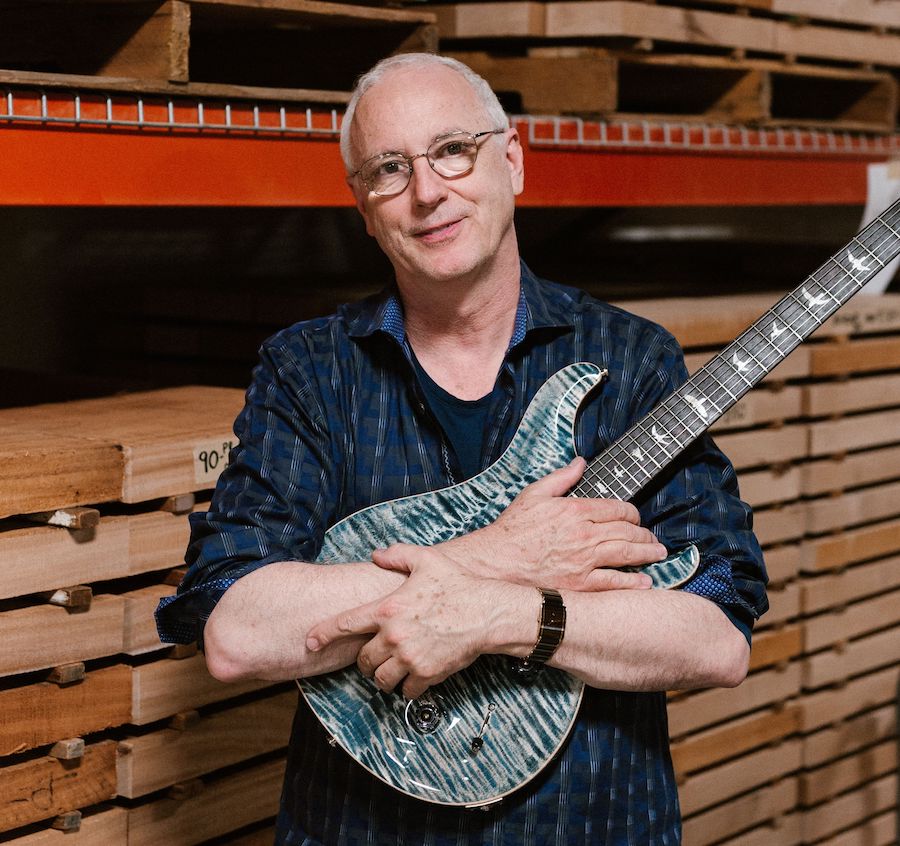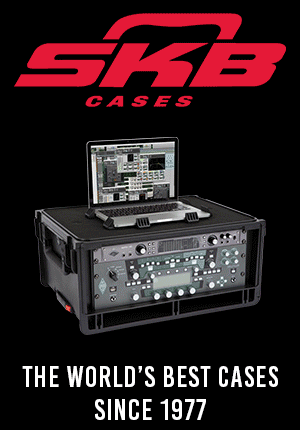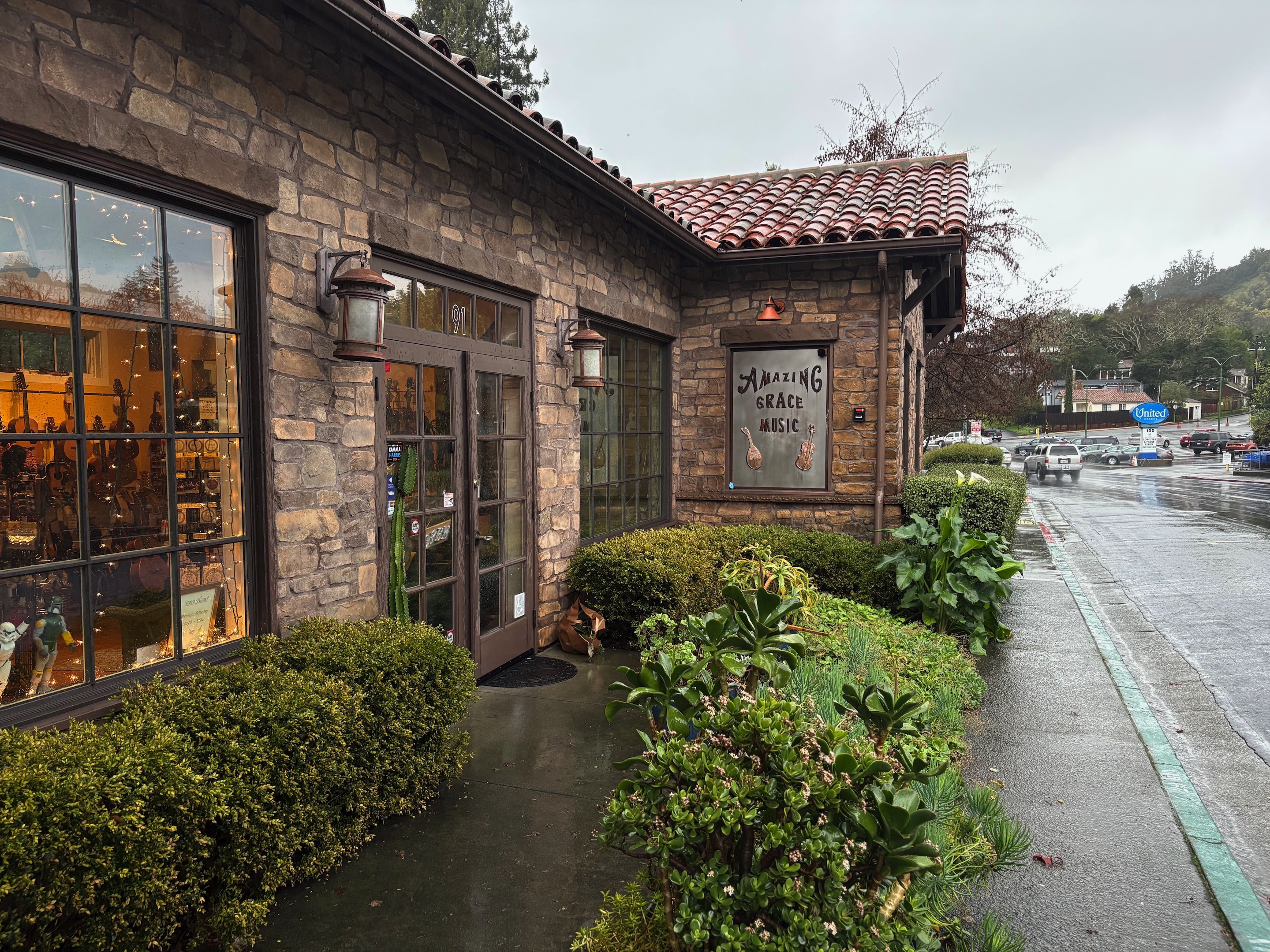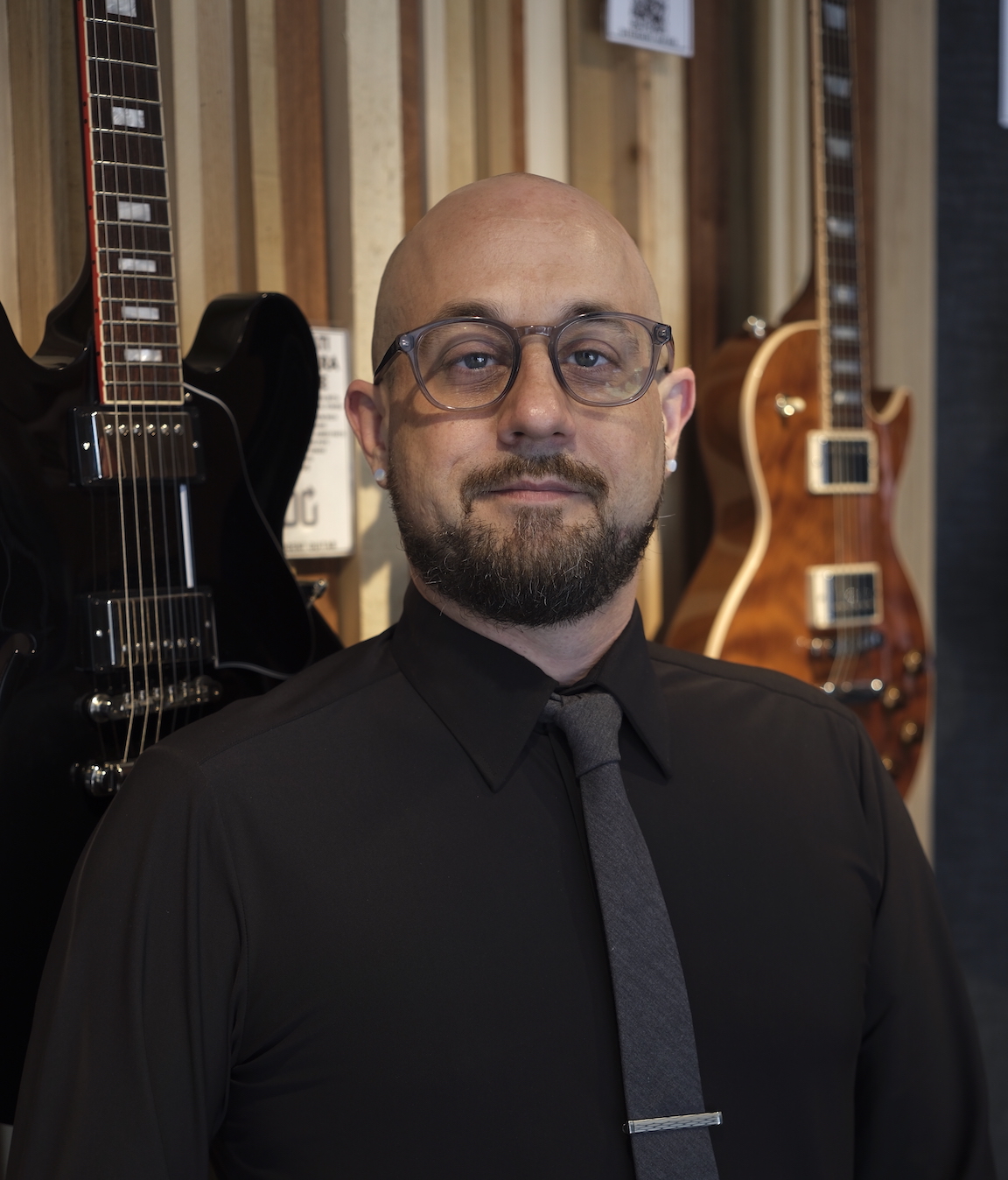
Paul Reed Smith
HQ: Stevensville, Maryland
Founded: 1985
Employees: 440
Best-Selling Product: Custom 24
Fun Fact: In addition to his work at PRS Guitars, Paul Reed Smith helps run an additional company called Digital Harmonic. Digital Harmonic is a leading innovator in signal and image processing, serving multiple market segments including the fields of security and medicine. He is also in a band, Eightlock, that is currently finishing an album and preparing for several 2022 tour dates across the U.S.
What’s PRS’S goal when comes to its Instruments? Are the guitars designed for a wide range of musicians, a certain type of player, collectors or a mix?
Our goal is to make the best guitars for the money that’s charged, on every level. We make instruments for every musician, and we want them to last a lifetime. Our guitars are tools that are depended on by professional musicians every day. We also aim to provide a truly enjoyable experience for the casual and beginner player. I’ve seen some beginners get a guitar that is not well-made, and that makes it harder for them to learn. It might even cause them to quit. For us, we bring quality and dependability at every price point to ensure that musicians of all skill levels have no barriers to expressing themselves through their instrument.
Interesting. What would you say defines the sound of a PRS guitar?
It took me many years to be able to answer this question. I used to say that our instruments were defined by their powerful and clear sound. Now I would say that they’re as musical as possible and provide the player with a quality tool that they can imprint the essence of their own playing upon. Our goal is not to build a guitar, it’s to build musical instruments.
What does PRS give a player that no other guitar manufacturer can?
Look, I don’t know about other guitar manufacturers, and I don’t want to get into that type of discourse. I will say that PRS strives to make instruments that play in tune, stay in tune, are easy to play and sound beautiful.
What characterizes your core customer?
We offer a wide range of instruments for a variety of players. We want to help everyone, from beginner to pro, on their musical journey, and we do support everyone from John Mayer to the entry-level guitar player. To your point though, we aim to create instruments that are beloved by those who are passionate about music and want to use the guitar as their way of expressing themselves. In the end, it is all about the music to us.
So, has PRS’s core customer and fanbase changed over the years?
I think the biggest change in our fanbase is simply that it has grown. We’re offering the most diverse lineup of products in our history at the most diverse range of prices in our history. That has helped us to reach new players.
How have you maintained your connection with your fanbase during an era bereft of trade shows?
We have a strong marketing team that works hard to translate what goes on inside the business to the world and tell our stories. We were working hard on that before the pandemic, but the last two years have pushed us forward faster than we might have moved if we had not been faced with those challenges. We have several original series on our YouTube channel that have been well-received and connect our audiences to us — such as From the Archives and From the Factory Floor. In 2020, we launched a series called Long Distance [in which] I called to talk to several of our artists and endorsers like Neal Schon, Carlos Santana and John Mayer, and we taped the Zoom calls. I thought that was really cool. We also host livestream events [during which] people can ask us their questions and get them answered in real time.
Awesome. What are you looking forward to seeing as in-person events re-emerge?
I’m looking forward to our artists getting back to work playing live music and people being able to enjoy those shows. The artists were hit so hard by COVID-19. As an industry though, we’ve made it through OK, and for that, I’m thankful.
How has PRS contended with the supply chain challenges prevalent across not just MI, but all industries over the last year?
We’ve worked very hard to stay on top of supply chain challenges and keep the business moving forward. Every issue is unique, and we work to solve them on a case-by-case basis. We have very strong relationships that we’ve built with our partners that help us navigate through challenges. Our relationships naturally run very deep, as we don’t just slap our name on others’ goods but truly partner with people to build quality products to our specifications. Our SE series guitars, for example, were developed in-house here in Maryland and with our own processes in mind. We then worked with our partners overseas to make them, developing new tooling and new processes along the way. Those kinds of partnerships go a long way in challenging times.
Can you talk to us about your SE series and its dedicated personnel? It seems like it’s growing really fast.
Well, we didn’t just hire one person to manage it. We have a whole team of people working on the SE series, including Doug Shive, who has been part of leading that team since the very beginning, and John Walker, who has been a consultant with us for year but officially joined PRS just last month. Jack Higginbotham, our chief operating officer, is overseeing everything with the SE series and amplifiers. Jack asked to get more involved there because he did see the opportunity to grow that portion of the business. And I like the way it’s going. The SE guitars are used by touring artists, but they are also a great entry point for more novice players. I’m proud of how those instruments have evolved.
To that point, How important are artists’ signature guitars to PRS’ approach to the marketplace?
We would not be here without the support of our artists. We started with Carlos Santana, Howard Leese, Al Di Meola and other artists [who] gave us credibility. Now we have a large, robust roster of talented musicians who are supporting our guitars, and we are grateful for that.
Switching gears, have wood-related regulations affected your business?
Wood regulations have affected the business in the past, but not so much recently. When certain changes first took effect, getting the appropriate paperwork from the government was not easy. But we were diligent about learning, understanding and developing processes early on, and today it has simply become part of the business.
Most importantly though, the relationships we have throughout our wood supply chain are strong and deeply rooted. We’ve worked closely together for a long time, sometimes up to 40 years, and that allows us to understand and navigate these situations as they come up much faster. This also quickly keeps us up to date with the latest regulations. For example, when new logistics regulations were implemented around East Indian rosewood, we were one of the first in the industry to become fully compliant. We’ve always put a lot of effort into sustainability and ethical sourcing. If you do the work up front, it’s a little easier to keep up with as you go.
What differentiates PRS acoustics from the range of other options available?
PRS acoustics are braced differently and possess a unique and inspiring tone. The bracing pattern was developed from X-raying an old Torres guitar. When studying Torres’s building philosophy, we learned to treat the instrument like a speaker cabinet; lock down the back and sides and let the top freely vibrate. So, we use X bracing across the center of the top for integrity and fan bracing in the belly of the guitar to allow the top to vibrate. The result is a bold and strong voicing. I love it.
That’s Interesting. Are you able to remain involved in product development?
Oh, I live in product development. It goes two ways: I’m committed to both making new products and making sure existing products are up to snuff. We actually have a meeting series called one-a-day, where me, the engineering team and some other key people in the business sit together, and we have a list of improvements we’re working on for the guitars and amplifiers. We hit that list every day. Some of the items on the list are subtle, but you bet they add up to be more than the sum of their parts and help make the guitars better. Every day.
What’s your favorite stage of product development?
I like when it starts becoming real. When we tool-up new pickups and they’re very musical, I love it. When we tool-up a new neck shape, like on the Silver Sky — I thought that was one of the best I’ve ever had my hands on. That’s exciting!
PRS has strong brand identity. How has that evolved over decades?
The company has evolved with tens of thousands of baby steps. I don’t even like the word brand for describing us. Our identity, I hope, is in the design and quality of our products. There are easy things that can be attached to our identity like the bird inlays, the trademark scoop and the headstock shape, but at the core of who we are is our desire to push guitar-making forward. We find small ways to make big improvements all the time, and we are unrelenting in our quest for great tone.
What’s next for PRS? How is it positioned toward 2022 and beyond?
Again, it is all about the product. All we’re doing is working on improving existing product and developing new product. Musicality is our guiding force. How musical is the product? Does it work for the customer and/or the artist? Does it do its job? We make sure to keep these things in focus.
If not music, what would you be doing?
I would have liked to have studied at the Scripps Institution of Oceanography to become a marine biologist.












